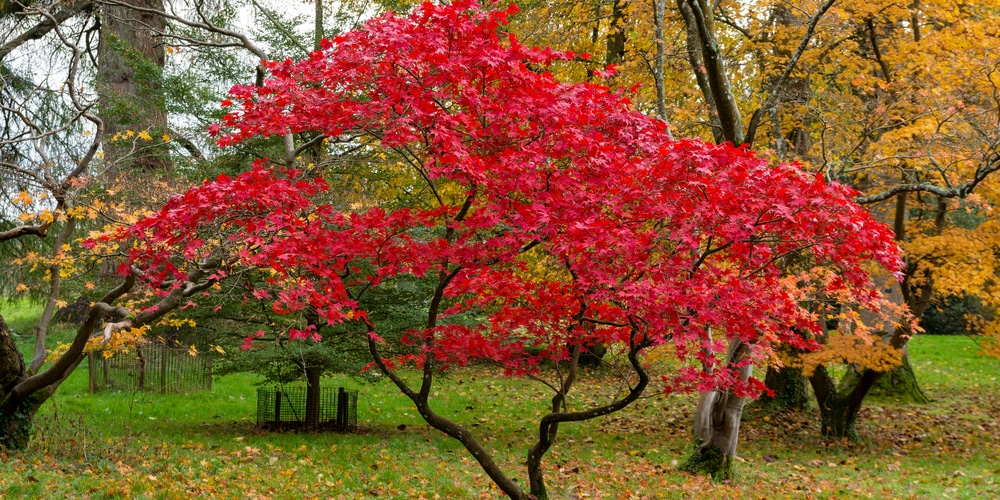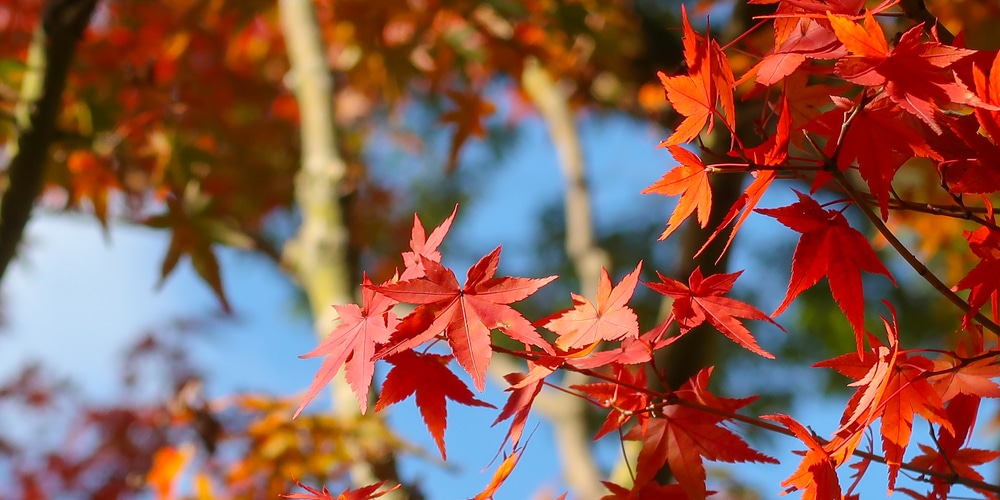Maple trees are stunning plants that will provide you with a splash of color during the autumn period. While there are many species and varieties of this type of tree, one of the most attractive ones is, without a doubt, the Japanese Maple.
Native to the mountainous regions of the Asian country that gives it its name, you can successfully grow this tree in Texas. Of course, you’ll have to be more careful than with other native plants, but you shouldn’t let that stop you if you would love to plant a Japanese Maple in your yard.
Texas’ hot temperatures and the sun will help your tree gain the attractive color that made its name all over the world. If you want to learn more about how to care for and grow this stunning tree in your garden, keep reading this Japanese Maple Texas guide we put together for you.
Characteristics
There are a wide array of options when it comes to Japanese Maple that can we can divide into:
- Upright – which grow to a height up to 20 feet;
- The Weeping variety – which displays delicate leaves with branches facing downwards that won’t exceed six feet in height;
- Dwarf – that displaying a variety of characteristics depending on the cultivar. Many homeowners like this type of maple tree for its versatility, making it a great option to fill niches in the landscape.
Regardless of the variety, most Japanese maples are maroon-red and perfect for tight spaces and shaded areas. However, you can also find green-leaved ones. Regardless of their color, their fall foliage remains for weeks and falls into a pool of orange and gold leaves that might be a nuisance to manage.
It will add an aesthetic to your garden as the colors of the spring fade. While it may be hard to describe a typical Japanese maple for the array of varieties, they can be a rich asset to your home’s landscape for their lacy leaves and brilliant colors.
Caring for a Japanese Maple Texas
Sun Requirements
Japanese maples do well under the sun but may require some protection from Texan sunlight during the summer. The red varieties tend to be more sensitive to the sun than green ones. Ensure you provide them with some shade when the temperatures go above 90℉. Also, you must protect these trees from strong winds and avoid exposing them to frost. Luckily, in Texas, that is rarely a problem.
Water Needs
One of the best parts of these beautiful trees is that caring for them is relatively easy. All you have to do (once you find the proper spot) is provide them with enough water. Of course, you’ll want to avoid being extreme as too much watering can damage the tree’s roots. Deep watering every four to five days during the summer will be the ideal plan to follow: remember that more water isn’t better.
Increase the amount and frequency of irrigation during the summer and in the absence of rain. Cut back on the amount in late summer to ensure an intense red color during the fall.
If you live in Texas, you may have to add a layer of mulch to increase moist retention in the soil and inhibit the growth of weeds. Mulch will also protect the tree’s roots from heat and cold and help you reduce how frequently you irrigate.
Japanese Maple trees have shallow roots that aren’t as invasive as those from other trees. Thus, they can peacefully coexist with most trees and perennials without damaging sidewalks or foundations.
Soil
Another good feature of these trees is their adaptability. While Japanese maples can thrive in different conditions, they do best in moist and well-drained soils, especially slightly acidic. Planting them a few inches above the surface soil will guard their roots against rot and diseases. Avoid soils high in pH to eliminate the risk of yellow discoloration.
The best season to plant Maple trees in your garden is spring. However, doing it during the fall can also be successful as it provides the plant with enough time to establish itself while the rest of the tree is dormant.
Fertilizer
Depending on the quality of your soil, you may want to add some fertilizer to boost your Japanese Maple tree’s growth. Choose one low in nitrogen and slow-release and add in the spring and fall. It is best to prefer slow-release than products that act faster because the latter can cause the tips to burn. If you like organic products best, you can apply cottonseed meal or seaweed emulsions but remember that the results won’t be long-lasting.
Pruning
Japanese Maples don’t require much pruning, especially in Texas, where they grow slowly. However, you may still want to do it once per year to give your tree a graceful look. Don’t remove large branches, as they may need years to grow back. Prune your maple tree after fall and before the spring, when you’ll be able to see all the branches and have a good overview of the tree’s silhouette.
Pests and Diseases
Japanese Maples are sturdy and not susceptible to diseases. However, you will still have to take precautions to prevent pests from attacking your trees. Allow good air circulation and proper soil drainage to eliminate the risk of mold and fungus. If you notice dying limbs, you may want to apply some sulfate sprays or fungicides. Remember not to use any pesticide (even if organic) during the summer, as it might cause discoloration.
Japanese Maple Texas: The Bottom Line
This Japanese Maple Texas guide should help you in the process of planting one of these stunning trees in your garden or yard. As you should know by now, Texas climate can offer what these trees need for thriving. However, you’ll still have to be careful to provide them with the proper amount of water, ensure their soil is nutritious, and keep an eye out for pests and diseases. Still, if you find the appropriate spot for this tree, you can enjoy its beauty all year round.
Related article: Trees with red leaves all year round

